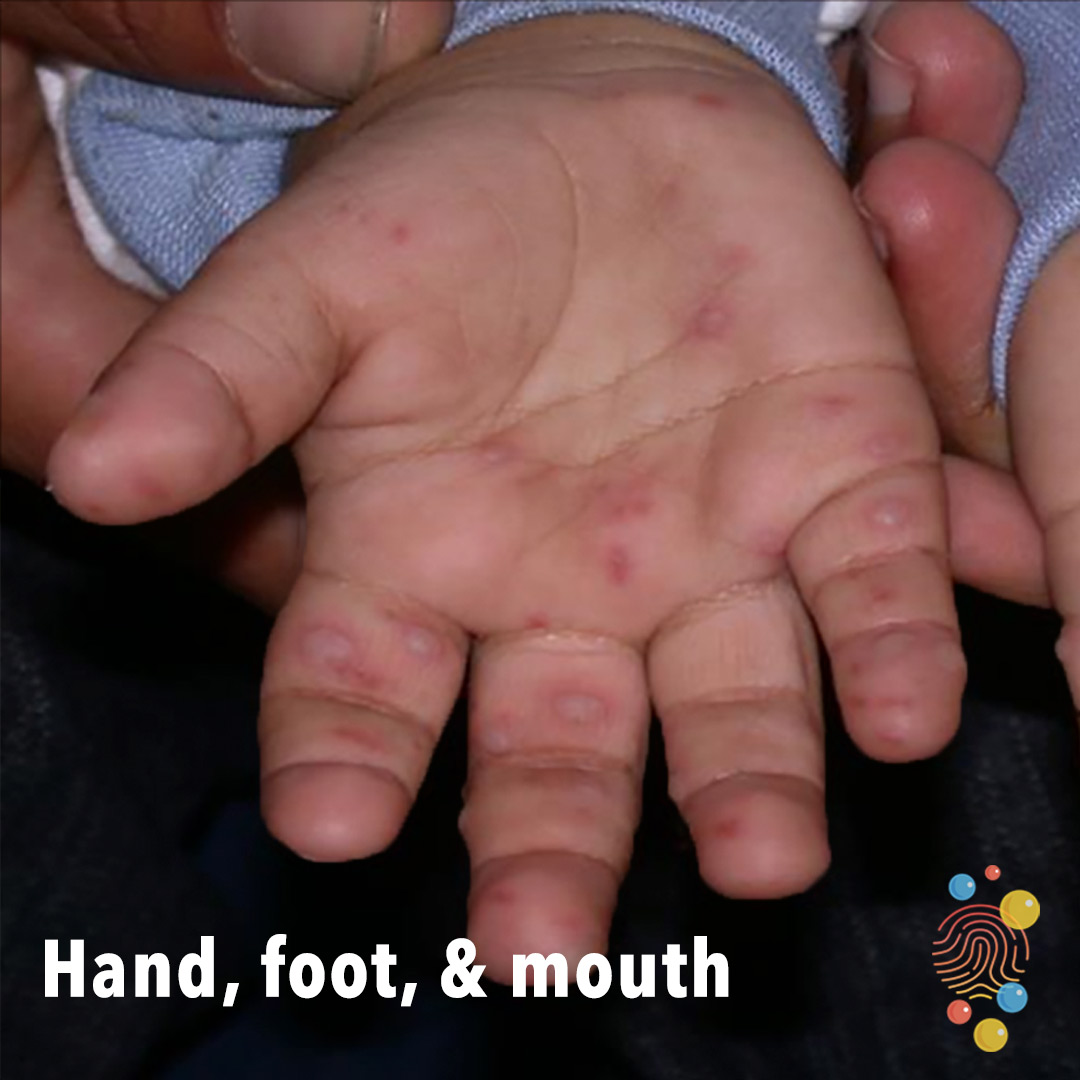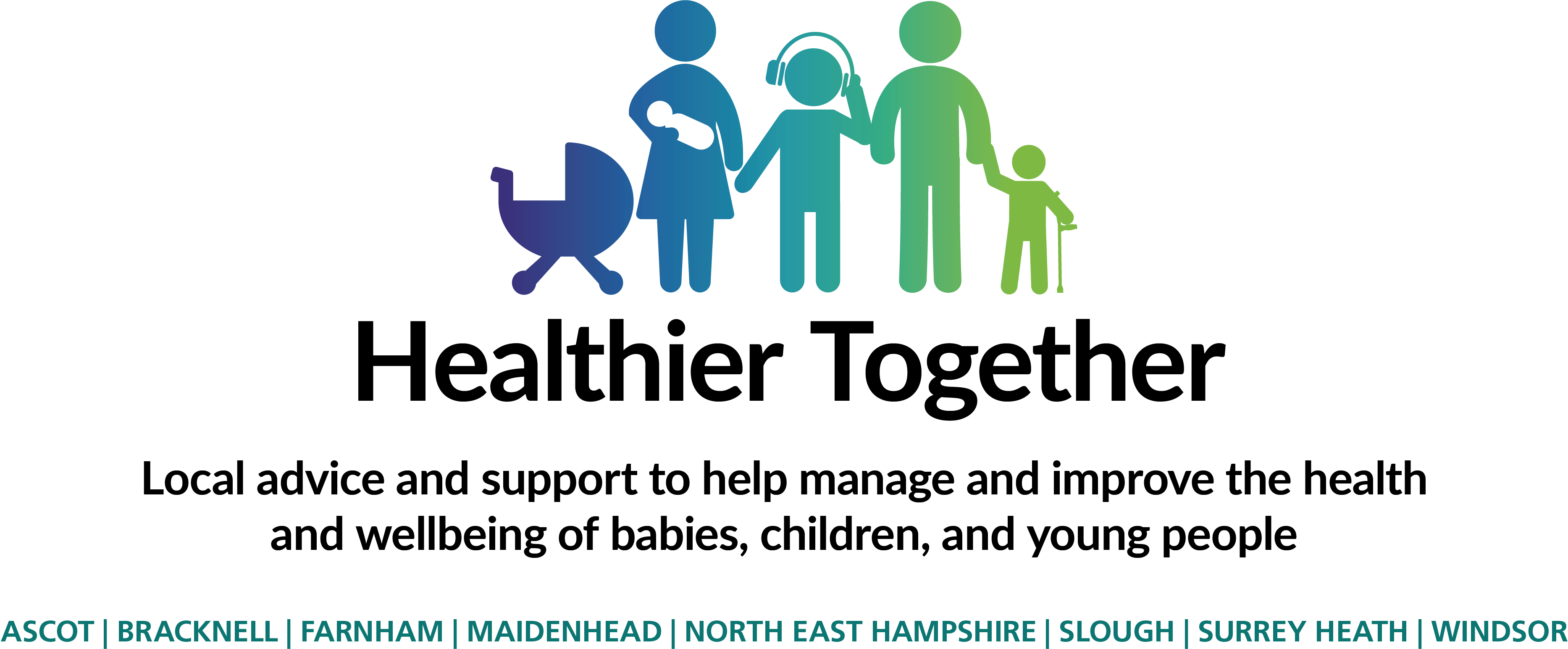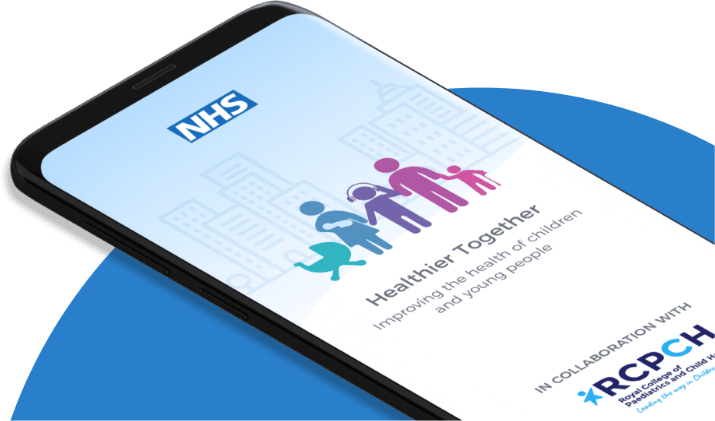Hand Foot and Mouth
Hand Foot and Mouth is a common childhood illness, caused by a virus called Coxsackie. It is usually a mild infection that does not need specific treatment and will usually get better on its own. Antibiotics will not help. It usually clears up by itself in 7 to 10 days.
● a high temperature
● sore throat
● reduced appetite
● generally feeling unwell.
After a few days mouth ulcers and a rash will appear.

Ulcers appear in the mouth and on the tongue. These can be painful and make it difficult to eat or drink

Red spots, which develop into blisters, usually appear on the hands and feet.

The blisters are grey in the centre and can be painful.
The symptoms are usually the same in adults and children, but they can be much worse in adults.
It's possible to get hand, foot and mouth disease more than once.
- Look at other childhood rashes
- Hand, foot and mouth disease has nothing to do with foot and mouth disease that affects farm animals
How to treat hand, foot and mouth disease yourself
You can't take antibiotics or medicines to cure hand, foot and mouth disease – it has to run its course. It usually gets better in 7 to 10 days.
To help with the symptoms:
- Drink fluids to prevent dehydration – avoid acidic drinks such as fruit juice
- Eat soft foods like soup – avoid hot and spicy foods
- Take paracetamol or ibuprofen to help ease a sore mouth or throat
A pharmacist can help with hand, foot and mouth disease
Speak to your pharmacist for advice about treatments, such as mouth ulcer gels, sprays and mouthwashes to relieve pain.
They can tell you which ones are suitable for children.
How to stop hand, foot and mouth disease spreading
Hand, foot and mouth disease is easily passed on to other people. It's spread in coughs, sneezes and poo.
You're infectious from a few days before you have any symptoms and you are also infectious for the first 5 days after your symptoms start.
To reduce the risk of spreading hand, foot and mouth disease:
- Wash your hands often with warm soapy water – and teach children to do so
- Use tissues to trap germs when you cough or sneeze
- Bin used tissues as quickly as possible
- Don't share towels or household items – like cups or cutlery
- Wash soiled bedding and clothing on a hot wash
Staying off school or nursery
Keep your child off school or nursery while they're feeling unwell.
But as soon as they're feeling better, they can go back to school or nursery. There's no need to wait until all the blisters have healed.
Keeping your child away from other children for longer is unlikely to stop the illness spreading.
Hand, foot and mouth disease in pregnancy
There does not seem to be a risk to the developing baby if a pregnant woman contracts hand, foot and mouth disease.
It does not appear to cause miscarriages or abnormalities in the developing baby.
However, if you have symptoms of hand, foot and mouth disease close to your delivery date (within three weeks), see your doctor. This is because there is a possibility you may pass the infection to your baby when it is born.
Usually newborn babies have a very mild illness if they get hand, foot and mouth disease. However, occasionally it can be very severe at this age.
When do you need to go to Accident and Emergency:
- Is going blue around the lips
- Too breathless to talk / eat or drink
- Becomes pale, mottled and feels abnormally cold to touch
- Becomes extremely agitated (crying inconsolably despite distraction),
- Is confused or very lethargic (difficult to wake)
- Develops a rash that does not disappear with pressure (the ‘Glass Test’)
- Develops swollen lips, a swollen tongue and is struggling to breathe
- Is under 3 months of age with a temperature of 38°C / 100.4°F or above (unless fever in the 48 hours following vaccinations and no other red or amber features)
When do you need to see your GP:
- Develops a painful rash
- Develops a blistering rash that you are concerned is not hand, foot or mouth or chickenpox
- Develops a rash affecting more that 90% of their body
- Has had chickenpox in the past few days and is now getting more unwell with a high fever and spreading red rash
- Develops red lips or a red tongue
- Develops significant skin peeling
- Is 3-6 months of age with a temperature of 39°C / 102.2°F or above (but fever is common in babies up to 2 days after they receive vaccinations)
- Continues to have a fever of 38.0°C or above for more than 5 days
Hand, foot and mouth disease is infectious. Check with your GP surgery before going. They may suggest a phone consultation.




